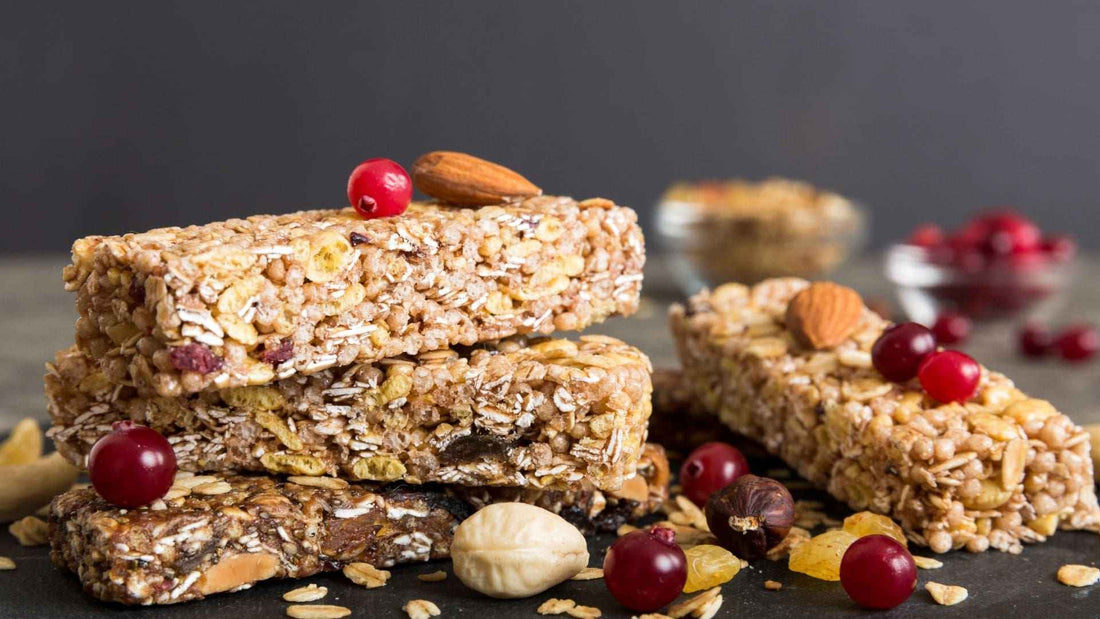The demand for protein bars, energy bars, and nutrition bars has skyrocketed in recent years, driven by health-conscious consumers seeking convenient and nutritious snack options. Whether you're a brand looking to develop your own bars or exploring contract manufacturing, understanding the energy bar manufacturing process is essential.
1. Ingredient Selection & Formulation
The first step in protein bar manufacturing is selecting high-quality ingredients based on the type of bar being produced. The right formulation ensures the bar maintains its texture, flavor, and nutritional benefits.
Common Ingredients Used:
- Protein Bars: Whey protein, plant-based protein (pea, soy, brown rice), nuts, seeds, and fiber-rich ingredients.
- Energy Bars: Oats, honey, dates, nuts, dried fruits, and natural sweeteners.
- Nutrition Bars: Added vitamins, minerals, superfoods, and functional ingredients like probiotics, fiber, and omega-3 fatty acids.
The formulation must strike the right balance of macronutrients to enhance product stability and taste.
2. Mixing & Blending
Once ingredients are selected, they are blended in industrial mixers to create a uniform dough or paste. Proper mixing ensures:
- Even distribution of proteins, sweeteners, and binding agents.
- A consistent texture to prevent the bar from becoming too hard or crumbly.
- The right moisture content for longer shelf life.
3. Shaping & Extrusion
The blended dough is then processed into bar shapes using either extrusion or molding methods:
- Extrusion: A continuous process where dough is pushed through a die to form a specific shape before being cut into bars.
- Molding: Used for softer bars, where the dough is pressed into molds for the desired shape and size.
This ensures consistency in the nutrition bar manufacturing process.
4. Baking or Cooling
Depending on the formulation, bars may undergo baking or cooling:
- Baked Bars: Some energy bar manufacturing processes involve baking to enhance flavor and texture.
- Cold-Pressed Bars: Non-baked bars are cooled to retain the potency of heat-sensitive nutrients.
5. Coating & Topping (Optional)
Some bars undergo additional steps for flavor enhancement:
- Chocolate, yogurt, or nut butter coatings.
- Toppings like nuts, seeds, or dried fruits for extra texture.
6. Cutting & Packaging
The bars are then cut into uniform sizes and individually wrapped. Packaging plays a key role in:
- Preserving freshness.
- Preventing contamination.
- Extending shelf life.
7. Quality Control & Testing
Before distribution, bars undergo strict quality checks, including:
- Nutritional Analysis: Ensuring the product meets labeled claims.
- Taste & Texture Testing: Checking for consistency and chewiness.
- Shelf-Life Stability Tests: Verifying freshness over time.
- Metal Detection & Safety Checks: Ensuring no contaminants are present.
Conclusion
The contract manufacturing process for energy bars, protein bars, and nutrition bars involves precise formulation, advanced machinery, and strict quality control. Whether you're launching a new brand or seeking private-label production, partnering with a trusted manufacturer ensures efficiency and high-quality output.
Looking for a reliable contract manufacturer for your protein or nutrition bars? Contact us today to explore our tailored manufacturing solutions!

